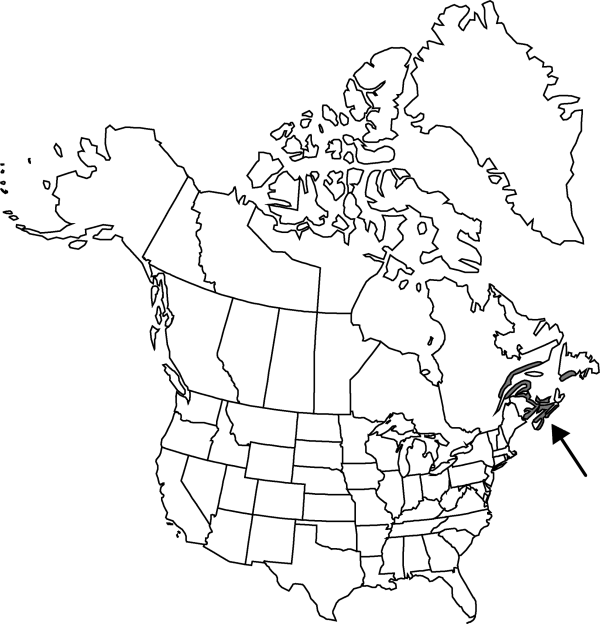Salicornia maritima
Canad. J. Bot. 65: 1424, fig. 1. 1987.
Stems procumbent to erect, infrequently prostrate, green, often becoming red or purple, especially at apex of segments, around flowers, and at sepal tips, simple or with primary and secondary branches, rarely with tertiary branches except when damaged, 5–26 cm, ultimate branches usually short; leaf and bract apices obtuse to subacute, not mucronate. Spikes ± torulose, 0.7–5 cm, with (3–)5–10(–14) fertile segments; bracts covering only base of cymes. Fertile segments (2d–4th in main spikes) 2.9–5.2 × 2.4–4(–4.3) mm, usually slightly longer than wide, widest distally, margins 0.2–0.3 mm wide, scarious. Central flowers semicircular distally, 1.5–2.6 × 1.4–2.4 mm, usually longer than wide, usually larger than lateral flowers and not reaching top of segment; anthers commonly not exserted, (0.1–)0.2–0.3 mm, usually dehiscing within flowers. 2n = 18.
Phenology: Flowering late summer–early fall.
Habitat: Upper levels of salt marshes and sides of channels on coast, very rarely in salt springs inland
Elevation: 0(-150) m
Distribution

N.B., Nfld. and Labr. (Nfld.), N.S., Ont., P.E.I., Que.
Discussion
Salicornia maritima was treated by P. C. Standley (1916) as S. prostrata, although his circumscription included only prostrate and procumbent individuals. He appears to have included erect plants in S. europaea. Salicornia prostrata is a Eurasian species which occurs mostly in inland habitats in its native range.
The populations identified as Salicornia maritima from James Bay, in Ontario and Quebec, are morphologically similar to those from the Atlantic Coast, but their isozyme profile is identical to that of S. rubra. The report of S. maritima from Maine is based on Standley’s citation of S. prostrata, but it requires confirmation. The species occurs in New Brunswick adjacent to the Maine border.
Selected References
None.